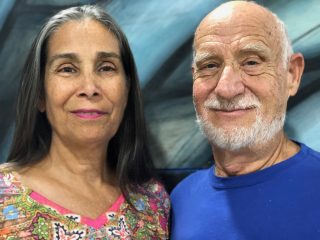The journey of science and art stands on the shoulders of the works of others who have gone before and is a never-ending story of the wonders of humanity and the world.
After our 5th day of quarantine at the Hyatt in La Paz, Mexico, Dylan picks us up with all our luggage and art supplies and drives us to the port where the Falkor is moored. I look at the ship with awe and some trepidation. Awe, because of the amazing journey we have ahead of us. Trepidation, because I heard we might have rough seas and the last thing I want is to be seasick in my quarters. Well, good news, upon writing this we have had smooth seas with mild, comforting rocking.
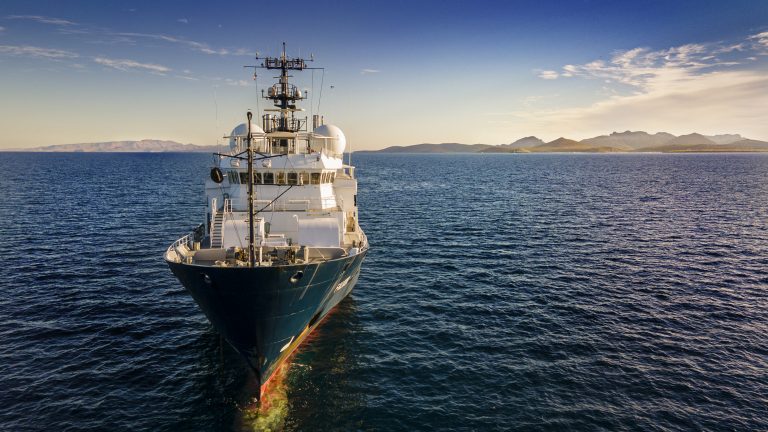
Robert Stackhouse and I (Carol Mickett), artists in the USA, are a collaborative team who make art about water and all things connected with water. When we learned from Executive Director, Dr. Jyotika Virmani, that the Schmidt Ocean Institute hosts an Artist-At-Sea program aboard their research vessel, Falkor, we sent in a proposal. We applied to be on the final voyage of the Falkor as it transforms into Falkor (Too), the Institute’s new and much larger ship with travel-in-thin-ice capability. The destination for Falkor’s journey is Vigo, Spain.
This final voyage is uniquely not a science expedition, but a time for the crew to pack up the ship in preparation for transitioning to the new vessel. While it would have been exciting to see the ship in full scientific action, now, having been at sea for five-and-one-half days, we realized we have lucked out. The quiet on board has made it possible for us to feel the spirit of the ship: Falkor, the Luck Dragon from The NeverEnding Story, which permeates the vessel. Its presence is unmistakable as it merges with the physical Falkor.
And then, there is the crew, who function like the blood that circulates in our bodies. The crew, just like the Luck Dragon, is one with the ship. It is uncanny how well they get along. How they move seamlessly through the vessel and amongst each other. Each crew member does their job and yet finds time to exercise, socialize, and, best yet, have meals together. The meals on board are prepared by two chefs and are not to be missed.
Robert and I have a studio set up in the Wet Lab, which is typically where the scientists receive and study specimens that come up from the ocean.
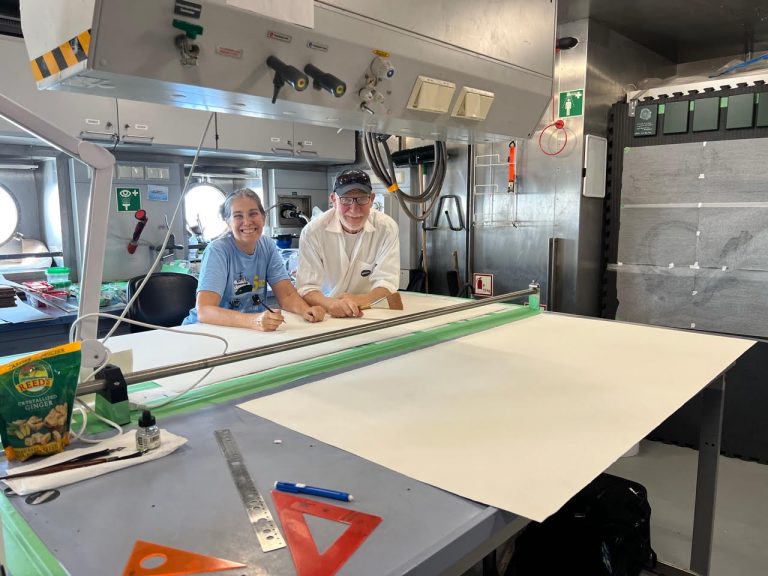
We have two primary projects on which we are working. The first is a painting to commemorate and celebrate the Falkor both ship and spirit. The painting will include a gold image of the Luck Dragon-Falkor superimposed over a depiction of the ship-Falkor. The dual images rest on a blue-greenish background which will contain, also in gold, the signatures of the crew.
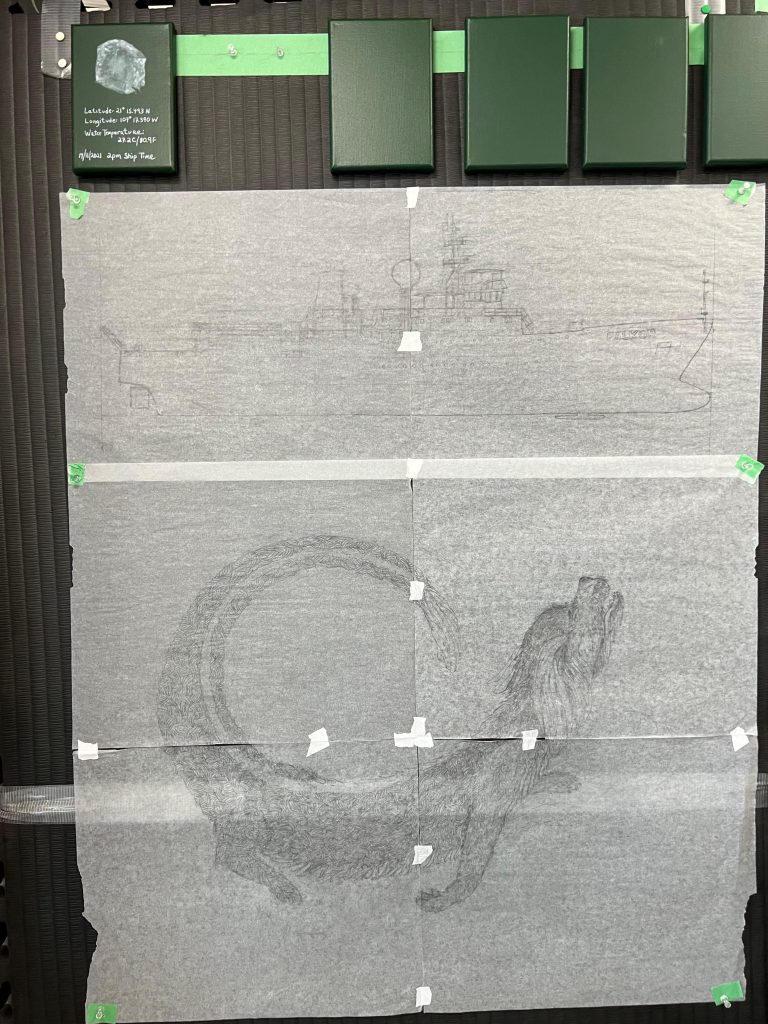
Our second project is a continuation of our ice cube and ice cube tray series. Afterall, if you want to cool water, add ice. Every day at 2pm ship time, we or a member of the crew tosses an ice cube into the ocean.
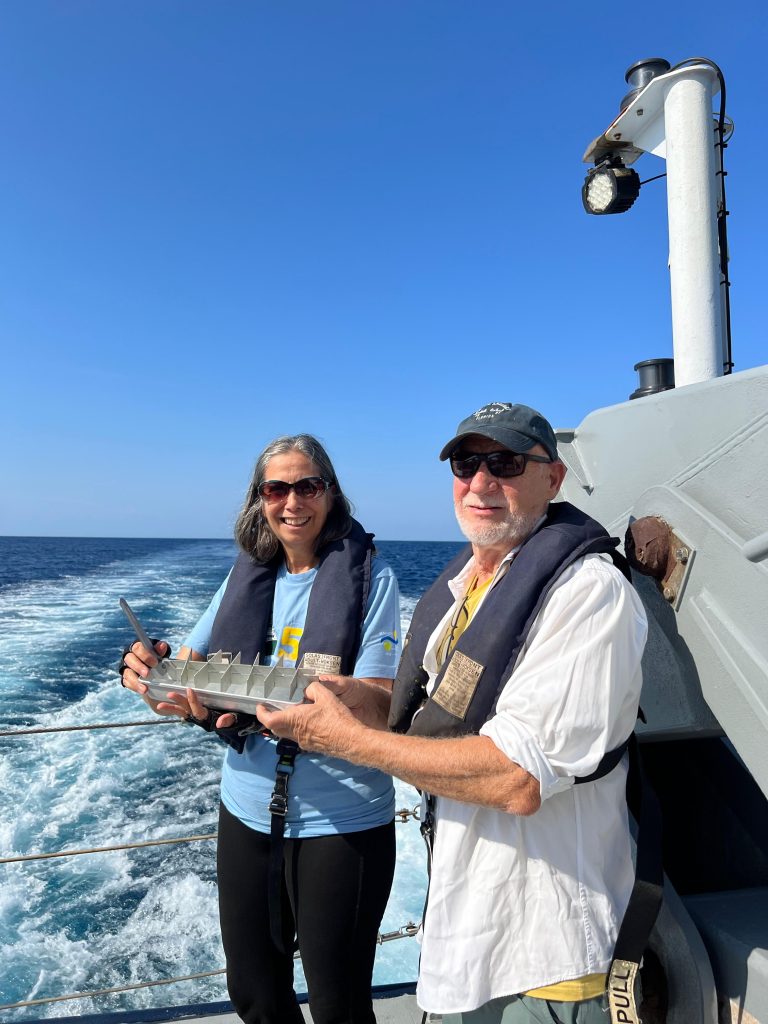
We video tape the event and post it on Instagram and Robert and my Facebook pages. We then make an ice cube painting on which we list the latitude, longitude, and water temperature at the 2pm hour. A photograph of each painting (7” x 5”) is posted on Instagram and Facebook.
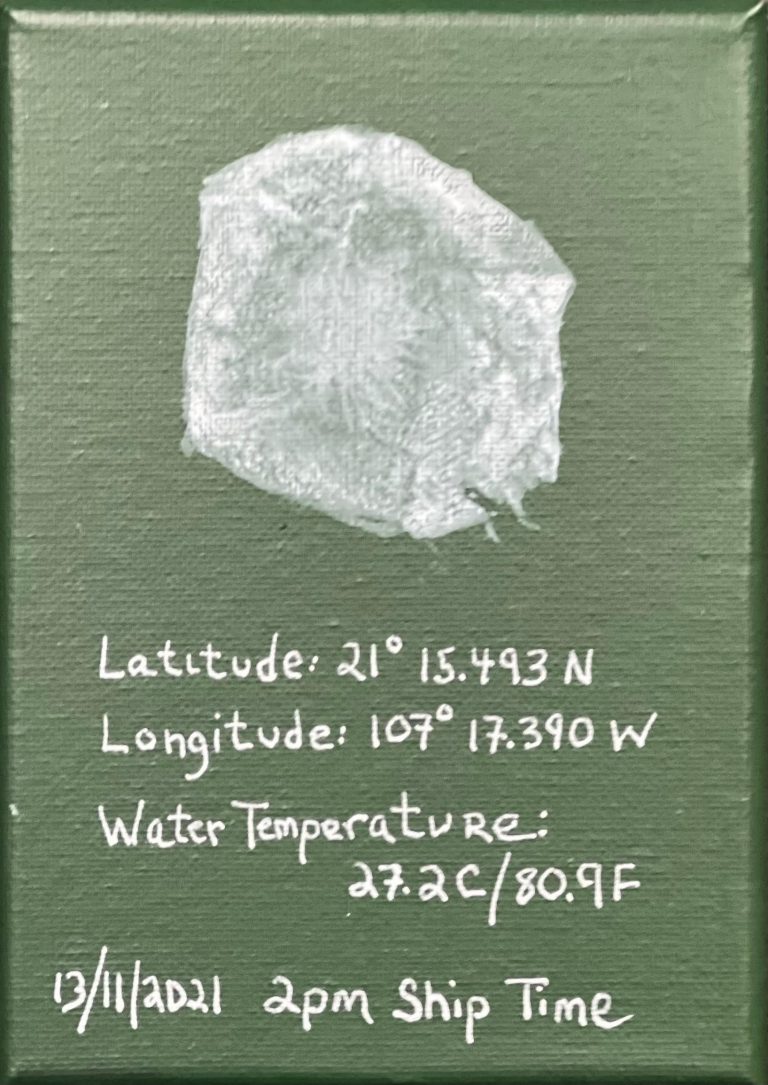
The Falkor is filled with art from former Artists-At-Sea. This is a great testimony to the Schmidt Ocean Institute’s recognition that the two disciplines – art and science – both share the creative spirit and “ride the Luck Dragon” on a never ending story.
